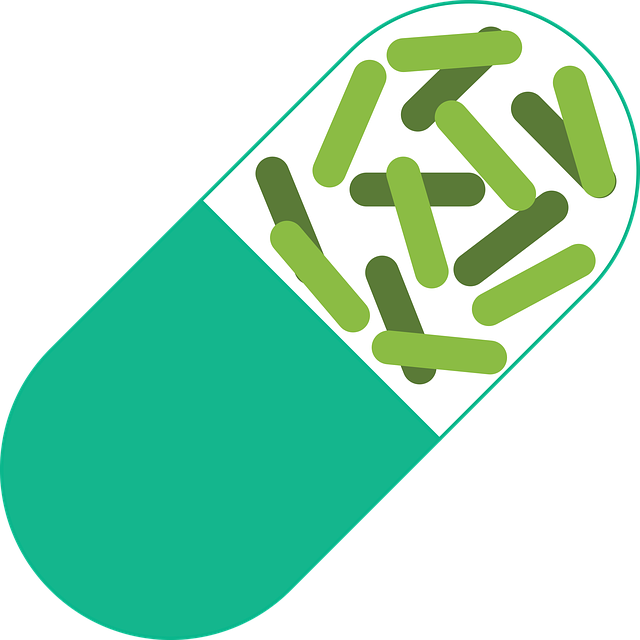Effective Kratom Rehab: Finding the Right Treatment Options for You
Understanding Kratom Addiction
What Is Kratom?
Kratom is an evergreen tree native to Southeast Asia. Its leaves are harvested, dried, and processed into powders, capsules, and teas. While traditionally used for medicinal purposes like pain relief and energy enhancement, kratom is increasingly abused for its opioid-like effects at higher doses.
In small amounts, kratom acts as a stimulant, boosting energy and focus. At larger doses, it mimics the sedative and euphoric effects of opioids. Despite its prevalence, the FDA has not approved kratom for medical use. Unregulated use has led to rising concerns about its addictive properties and potentially adverse effects. Additionally, the growing prevalence of kratom use disorder is becoming a significant public health issue.
Signs and Symptoms of Kratom Addiction
Kratom addiction occurs when individuals develop kratom dependence due to its chemical compounds that activate opioid receptors. Prolonged use can lead to painful withdrawal symptoms and significant behavioral changes.
Physical Symptoms:
Trembling and sweating
Drug cravings
Severe withdrawal symptoms, including fatigue and nausea
Behavioral Symptoms:
Changes in sleep habits
Disruption in daily routines
Withdrawal from family members and social activities
Kratom abuse can lead to opioid withdrawal symptoms when use stops abruptly, making professional help essential.
Kratom Addiction Treatment
The Role of a Kratom Addiction Treatment Center
A kratom addiction treatment center provides specialized care to help individuals with kratom detox and overcome addiction. These centers often offer comprehensive treatment methods, including:
Medically-Assisted Treatment (MAT): This approach helps manage kratom withdrawal symptoms using FDA-approved medications like Suboxone and Vivitrol.
Therapy Sessions: Both individual therapy and group therapy address underlying issues related to addiction.
Holistic Care: Nutrition, fitness, and mental health support aid in the recovery process.
Treatment programs focus on healing the whole person, not just overcoming kratom use disorder.
Types of Kratom Addiction Treatment
Residential Treatment Centers:Patients live on-site, receiving 24/7 supervision and support. This treatment type is ideal for individuals with severe withdrawal symptoms or co-occurring disorders like depression and anxiety.
Outpatient Treatment Programs:Designed for those who cannot commit to inpatient programs, outpatient settings offer flexibility while providing access to therapy sessions and medical detox services.
Medical Detox Programs:These programs safely manage the detox process and reduce the risk of complications. Medical professionals monitor withdrawal symptoms to ensure a smoother recovery journey. Kratom detox is a critical component of medical detox programs.
Group Therapy and Individual Therapy:Counseling sessions focus on behavioral changes and building resilience. Cognitive Behavioral Therapy (CBT) is often used to address negative thought patterns and behaviors linked to kratom abuse.
The Process of Treating Kratom Addiction
Treating kratom addiction is a multi-step process that requires a comprehensive approach. The goal of treatment is to help individuals overcome their addiction and achieve long-term sobriety.
Step 1: Medical Detoxification
The first step in treating kratom addiction is medical detoxification. This process involves safely removing kratom from the body while managing withdrawal symptoms. Kratom withdrawal can be severe and uncomfortable, but medical professionals are equipped to provide medications and support to ease this transition. By closely monitoring patients, they ensure a safer and more comfortable detox experience.
Step 2: Residential Treatment
Residential treatment offers a structured and supportive environment for recovery. In this inpatient setting, individuals live at the treatment center and engage in various therapy sessions, including individual and group therapy. This immersive approach is particularly beneficial for those with severe kratom addiction or those who have not found success with outpatient treatment. The constant support and supervision help patients focus entirely on their recovery.
Step 3: Outpatient Treatment
Outpatient treatment provides flexibility for individuals who need to maintain their daily responsibilities while receiving treatment. This option is ideal for those with mild kratom addiction or for individuals transitioning from residential treatment. Outpatient programs offer access to therapy sessions and medical detox services, allowing patients to receive the necessary support while living at home.
Step 4: Therapy Sessions
Therapy sessions are a cornerstone of kratom addiction treatment. Individual therapy offers a safe space for patients to explore the root causes of their addiction and develop effective coping strategies. Group therapy fosters a sense of community and shared experience, which is crucial for long-term recovery. These sessions help individuals build resilience and address the behavioral aspects of their addiction.
Step 5: Medication Management
Medication management plays a vital role in kratom addiction treatment. Medical professionals can prescribe medications to alleviate withdrawal symptoms and reduce cravings, making the recovery process more manageable. This approach is often combined with therapy sessions to provide a holistic treatment plan that addresses both the physical and psychological aspects of addiction.
Step 6: Aftercare
Aftercare is an essential component of a successful kratom addiction treatment program. Aftercare programs offer ongoing support and guidance to help individuals maintain their sobriety. These programs may include continued therapy sessions, support groups, and other activities designed to reinforce the skills and strategies learned during treatment. By providing a structured support system, aftercare helps individuals navigate the challenges of long-term recovery.
In conclusion, treating kratom addiction requires a comprehensive approach that includes medical detoxification, residential treatment, outpatient treatment, therapy sessions, medication management, and aftercare. By providing a structured environment and ongoing support, treatment centers can help individuals overcome their addiction and achieve long-term sobriety.
Managing Withdrawal Symptoms
What Does Kratom Withdrawal Look Like?
Kratom withdrawal is physically and emotionally taxing. Symptoms include:
Anxiety and depression
Insomnia and irritability
Muscle aches and fatigue
Since kratom binds to opioid receptors, withdrawal symptoms mimic those of opioid addiction. A medical detox program can alleviate these symptoms, helping patients overcome addiction safely through a comprehensive kratom detox.
Benefits of Seeking Treatment
Structure and Accountability
Kratom detox programs offer a stable environment that promotes sobriety. Treatment centers provide:
Community Support: Group therapy sessions build a sense of connection among patients.
Professional Guidance: Medical professionals offer tools and strategies for maintaining a drug-free life.
Improved Health and Well-being
Recovery programs focus on restoring health through:
Nutritious Meals: Address nutrient deficiencies caused by kratom addiction.
Exercise Classes: Improve physical strength and mental clarity.
Holistic Activities: Yoga and meditation support mental health conditions like anxiety and stress.
Kratom detox is a crucial step in restoring health.
Patients recovering from kratom abuse treatment learn to rebuild their lives and improve overall well-being.
Frequently Asked Questions
What Medications Are Used in Kratom Addiction Treatment?
FDA-approved medications like Suboxone and Vivitrol help manage opioid withdrawal symptoms caused by kratom abuse, making them effective for kratom detox. These medications ease painful withdrawal symptoms and reduce cravings, aiding the recovery process.
Why Do People Use Kratom?
Kratom is often used as a self-treatment for:
Chronic pain relief
Anxiety and depression
Withdrawal from other opioid drugs
However, long-term use can worsen mental disorders and lead to chemical dependency. Additionally, kratom dependence can become a potential consequence of prolonged use.
How Does Kratom Use Affect Pregnancy?
Research on kratom use during pregnancy is limited, but potential risks include:
Respiratory suppression
Neonatal withdrawal symptoms
Women using kratom while pregnant may face adverse effects, requiring immediate medical intervention. Kratom dependence is also a significant risk factor for pregnant women.
Overcoming Kratom Addiction
The Recovery Journey
Treating kratom addiction involves a personalized treatment plan combining kratom detox and therapy. The recovery process includes:
Detox Process: Safe removal of kratom from the body under medical supervision.
Therapy Sessions: Individual and group therapy address addiction’s root causes.
Ongoing Support: Peer groups and outpatient programs ensure long-term sobriety.
Conclusion
Finding the Right Treatment Options
Kratom detox is vital for successful recovery. Whether you choose residential treatment centers or outpatient programs, seeking treatment is a critical step in overcoming kratom addiction. Treatment centers provide structure, community, and the tools needed for a healthy life.
Tennessee Behavioral Health, located in Nashville, Tennessee, offers comprehensive kratom addiction treatment programs designed to address both the physical and emotional challenges of recovery. Our experienced medical professionals provide personalized care through residential treatment, outpatient programs, and therapy sessions. At Tennessee Behavioral Health, we focus on creating a supportive environment that promotes healing and long-term sobriety.
If you or a loved one is struggling with kratom addiction, Tennessee Behavioral Health is here to help. Contact us today to begin your recovery journey and take the first step toward a healthier, drug-free life.
FAQ's
Kratom addiction occurs when prolonged use of the substance leads to physical dependence and behavioral changes. Kratom contains chemical compounds that activate opioid receptors in the brain, causing effects similar to other opioids. Over time, users may need higher doses to achieve the same effects, leading to tolerance and dependence. When individuals try to stop using kratom, withdrawal symptoms such as anxiety, insomnia, and muscle aches can make quitting difficult without professional help.
Treatment options for kratom addiction include residential treatment, outpatient programs, and medical detox. Residential treatment provides 24/7 care and support in a structured environment, ideal for individuals with severe withdrawal symptoms. Outpatient programs allow for flexibility, combining therapy sessions with continued daily activities. Medical detox helps manage withdrawal symptoms under professional supervision. Tennessee Behavioral Health offers these programs alongside individual and group therapy to support patients in their recovery journey.
While some individuals may choose to treat kratom addiction without medication, medically-assisted treatment (MAT) is often recommended to ease withdrawal symptoms and reduce cravings. FDA-approved medications like Suboxone and Vivitrol can help manage the physical effects of withdrawal, making the recovery process more comfortable. Combined with therapy sessions and support groups, MAT significantly improves the chances of long-term sobriety. At Tennessee Behavioral Health, treatment plans are tailored to meet each patient’s unique needs.
The recovery timeline for kratom addiction varies depending on the individual’s level of dependence, health condition, and commitment to the treatment program. The detox process typically lasts 5–7 days, during which withdrawal symptoms subside. However, recovery involves more than just detox. Therapy sessions, counseling, and ongoing support may continue for weeks or months to address underlying issues and build coping skills. Tennessee Behavioral Health offers a continuum of care to ensure patients receive the support they need for lasting recovery.
















